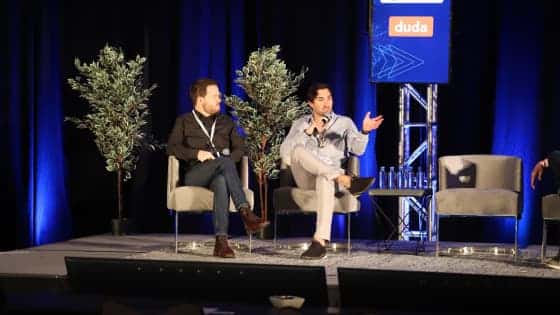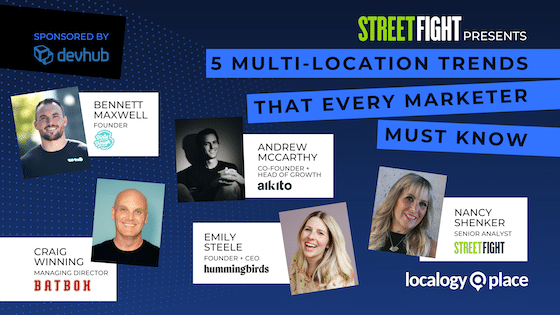Accessibility isn’t a new concern for businesses. The Americans with Disabilities Act was passed way back in 1991 (during Season 3 of Seinfeld). And with it came both the legal and moral authority to ensure that people with disabilities (of all kinds) were accommodated in the physical world.
Today much of the discussion has shifted to digital accessibility. Or as Audioeye‘s Ty D’Amore put it at the recent L23 conference in Coronado Bay, California, to the “ramps and rails of the digital world.”
We will periodically share full-length videos of sessions from the April conference. In particular, sessions that we believe were so good or so important that more people should see them.
One such session — “Digital Accessibility — Partnering to Help SMBs” — took place on the final day of the conference. The session featured D’Amore, who is Audioeye’s VP of Strategic Partnerships, and Duda‘s Russ Jeffrey, who is the website builder’s Director of Ecosystem and Product Strategy.
The panel’s premise was an examination of Duda and Audioeye’s partnership to provide an app that helps Duda users ensure they are building websites that comply with accessibility guidelines. The two companies have been working together on this for more than three years.
And there are many ways that a website can trigger a digital accessibility complaint. For example, a carousel without a pause button can be triggering for those with ADHD or epilepsy.
A Digital Accessibility Master Class
But the panel’s real value is as a primer on digital accessibility. Why it matters. Why it’s such an important issue now. And how it’s likely to evolve in the near term.
“Roughly 16% to 20% of the [US] population has some type of disability,” Jeffrey said when asked to explain the importance of digital accessibility. “You want to make sure that any site or any product that you are putting out there online caters to these individuals.”
The argument for accessibility essentially has two sides. Appealing to a large market of the disabled. And avoiding litigation.
D’Amore and Jeffrey each had a lot of insight and background to offer. And both seemed to genuinely care about the issue.
For example, I asked the panelists which was the bigger driver of compliance with digital accessibility. Was it a genuine impulse for corporate social responsibility? Or is just fear of litigation (based on Title III of the ADA, which protects public accommodations for the disabled)?
D’Amore seemed genuinely disappointed when he replied, “I’d say it’s 80/20 fear of litigation over corporate social responsibility.”
That said, D’Amore made the point more than once that lawsuits are advancing the cause of digital accessibility.
“At the end of the day, litigation is helping make the web more accessible.”
However, the point of the digital accessibility industry is to help enterprises, agencies, and SMBs make their digital presence accessible so they can avoid litigation.
The fear of litigation is based on real experience. We pressed the panel on how common digital accessibility lawsuits were. D’Amore estimated that three such lawsuits had been filed “since we have been on stage.” This was less than 7 minutes into the panel discussion.
Watch for More
Please enjoy the video of this session below and stay tuned for more posts like this in the coming weeks.





